Back to Sidestreet Bannerworks
Click here to find out how your engine can be featured!
.


Jervis Bay
by Pete Comley
with Nick Fisher
Lake Tapps, Washington USA
June, 2010
Jervis Bay is a model of a real loco that was built in 1942 by the Darjeeling Himalayan Railway at their locomotive works. The prototype was made by cladding one of their ubiquitous type-B engines with “modern” Art-Deco streamlining, which had been all the rage in Europe and America in the late 1930s. No-one knows why this 0-4-0 engine, with a top speed of perhaps 25 mph, was chosen to be streamlined, but apparently there was a desire to modernize the fleet image or, perhaps, to keep the workforce busy. Only one was made, and it was named Jervis Bay in recognition of the Royal Navy escort ship that heroically took on a German battleship whilst single-handedly escorting a large wartime convoy in the Atlantic (it was sunk).
The model
This project started during a discussion on strange engines and, with Nick’s interest in narrow gauge and my interest in streamlined trains, we decided it would be a most unusual and interesting engine to build. John Morrison supplied us with an excellent book called Halfway to Heaven, by Terry Martin, which provided photos of the loco and, most importantly, a side-view sketch showing it superimposed over a type-B engine.
At first we tried to see if we could use an Accucraft Edrig chassis that Nick had lying around but it soon became clear that only a proper type-B chassis would be suitable. We approached Roundhouse Engineering and they graciously agreed to sell us one of their Darjeelings, sans body.
It was my task to make the new shell. Nick finished it off and painted it. The body is a single piece of 24-ga. sheet steel, bent to shape, with side skirts, top fairing and cab plates soft-soldered to it. The problematic front end, with its compound curved shape, was made from a cut up, copper toilet-tank float, soldered to the shell. There was little modification required on the chassis -- only the gas tank and front coupling needed moving and the stack and exhaust pipes re-routed.
The whole shell simply clips over the boiler and chassis. However, it is a tight fit over the cylinders. The tender was made from sheet metal in a similar fashion.
We took the engine to Diamondhead 2010 for its inaugural run and to show it off to the world. True to Roundhouse tradition, it ran impeccably, and Nick enjoyed many runs with it. We identified a few logistical problems, like gas filling, but, on the whole, we are very pleased with the way it turned out. Also, just like the prototype, only one will ever be made -- at least by us!
|
|
|
| Builder | Pete Comley, Nick Fisher, Roundhouse Engineering |
| Date built | 2009 |
| Gauge | 32 mm (gauge 0) |
| Scale | 16mm |
| Boiler | Single flue |
| Fittings | Safety valve, regulator, pressure gauge, water glass |
| Fuel | Butane |
| Blow-off pressure | 45 psi |
| Cylinders | Two, double-acting D-valve |
| Reversing gear | Modified Walschaerts |
| Lubricator | Displacement |

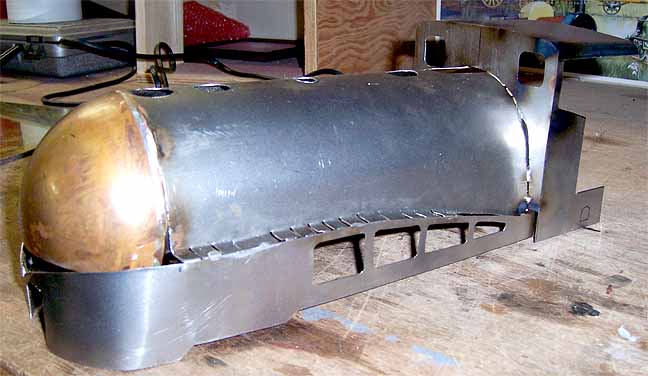
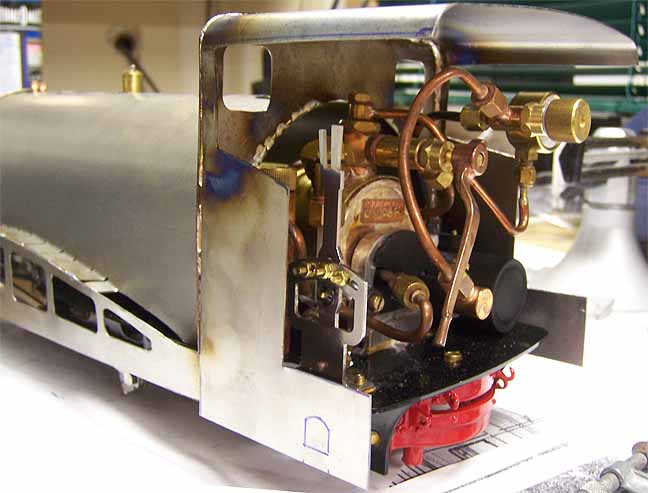
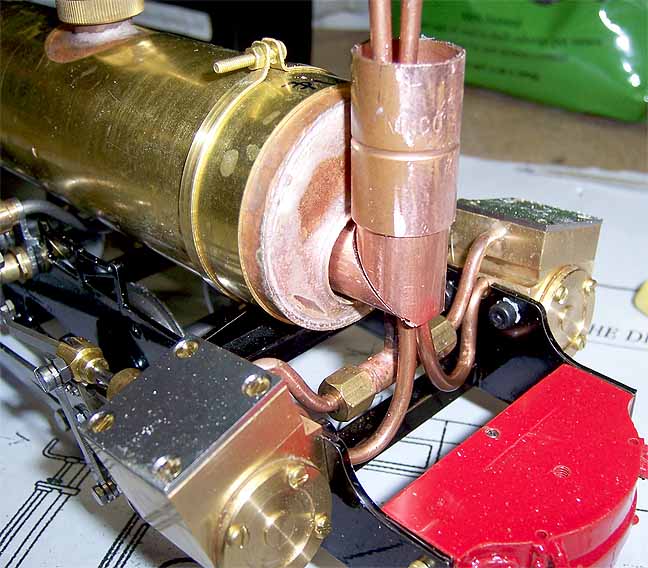


Below: The tender. Controls are readily at hand inside the open cab.
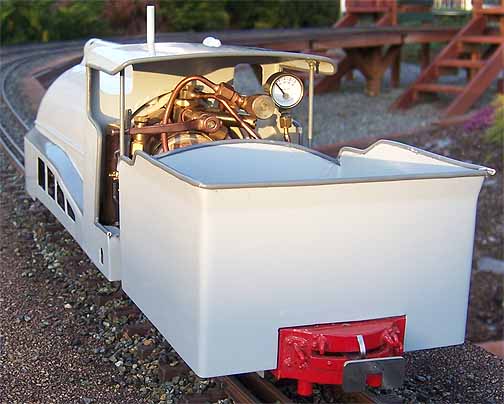
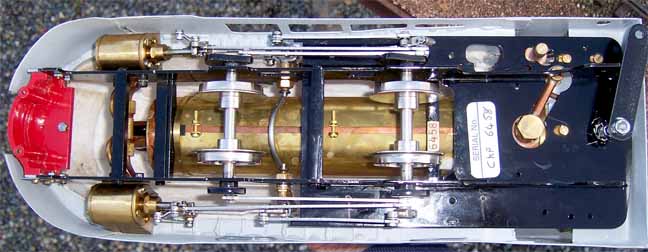
Back to Sidestreet Bannerworks
Click here to find out how your engine can be featured!
This page and its contents
Copyright Sidestreet Bannerworks, 2010